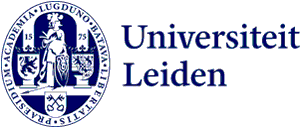
Remote sensing for Roman Mallorca with a Chastelain-Nobach fund
For the past 2 years, Dr Letty ten Harkel has been jointly running an excavation project of a suspected Roman villa site on the Balearic island of Mallorca with colleagues Dr Antoni Puig Palerm and Ritchie Kolvers, MA. The project was recently awarded a LUF Chastelain-Nobach fund to explore the extend of the site with a technique called magnetometry. ‘A geophysical survey is a much faster way to investigate the size of this potential Roman villa.’
Roman settlement in Mallorca
You would think we know a lot about the Roman period, but according to Dr Letty ten Harkel, that way of thinking is problematic. ‘There is often a sense that the Roman period is mostly uniform across Europe’, Ten Harkel notes. There are plenty of gaps in our knowledge. ‘Roman settlement in Mallorca is ill understood, for example. We know of two urban centres on the island, but in terms of rural settlements, there is still much to be uncovered.’

Accidental discovery
In 2012 roadworkers made an accidental discovery that would increase our understanding of the Mallorcan Roman countryside. ‘They stumbled upon a Roman bath house. Rural Roman bath houses are unknown on that part of the island’, Ten Harkel notes. ‘This bath house was suspected to be part of a Roman villa, though this possibility was never properly investigated.’
Until recently, only one Mallorcan villa had been excavated. Ten Harkel, Puig Palerm and Kolvers now investigate the suspected Roman villa at Son Servera, located on the other side of the island. ‘We want to understand whether a Roman villa system had been implemented on the island, and whether these villas looked the same. We also have questions on the relationship with the indigenous population.’

Suspected villa site
In 2023, a small team of Leiden students started to excavate test pits to determine the extent of the suspected villa site at Son Servera. ‘We quickly realised that a much faster way to investigate the size of the site is a geophysical survey. We applied for the LUF Chastelain-Nobach fund, and €10,000 was granted.’ In the summer of 2024 these funds will be used to get Ms Lena Lambers to do a magnetometry survey with the help of two students as interns. This will inform the next excavation season, taking place in August 2024.

Wines and dyes
Ten Harkel wonders if the Roman villa system on Mallorca is similar to the latifundiae system in other Roman provinces. ‘Mallorca was known for its agricultural wealth: the quality of its wines and the presence of other resources like dyes from snails.’ If the Mallorcan situation was similar to elsewhere in the Roman world, the villa would combine high status living with the exploitation of the local agricultural wealth. ‘This is an assumption, for the only thing we have is a bath house and some ceramics. The geophysical survey might prove this assumption wrong. It is a part of the puzzle we are working out.’
During the previous excavation season, the investigation attracted a lot of media attention. ‘The local municipality welcomed us with open arms, providing us with accommodation and meals. We notice that people are interested in the deeper history of the area and look forward to returning this year.’

